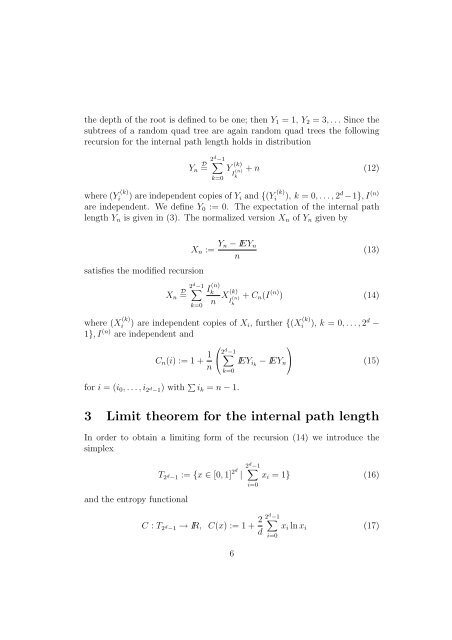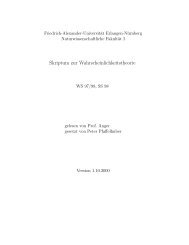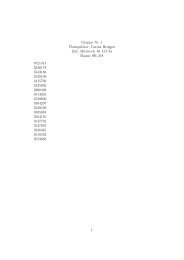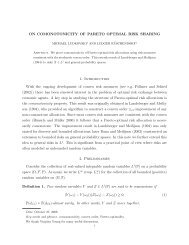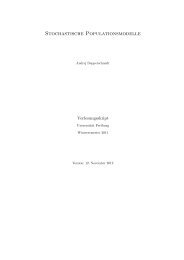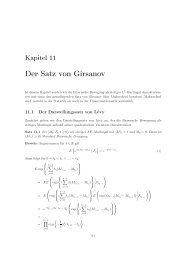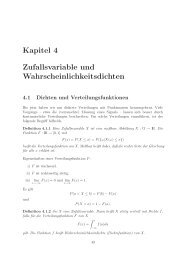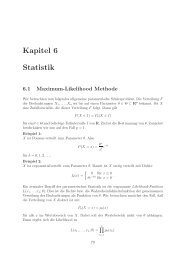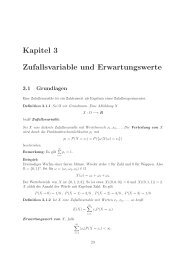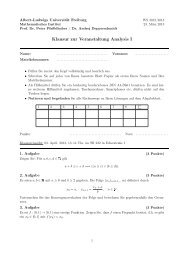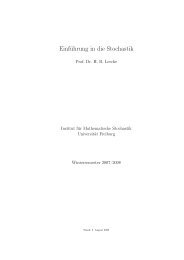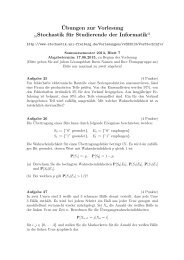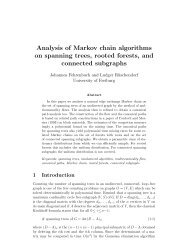On the Internal Path Length of dâdimensional Quad Trees
On the Internal Path Length of dâdimensional Quad Trees
On the Internal Path Length of dâdimensional Quad Trees
Create successful ePaper yourself
Turn your PDF publications into a flip-book with our unique Google optimized e-Paper software.
<strong>the</strong> depth <strong>of</strong> <strong>the</strong> root is defined to be one; <strong>the</strong>n Y 1 = 1, Y 2 = 3, . . . Since <strong>the</strong><br />
subtrees <strong>of</strong> a random quad tree are again random quad trees <strong>the</strong> following<br />
recursion for <strong>the</strong> internal path length holds in distribution<br />
Y n D =<br />
2 d −1 ∑<br />
k=0<br />
Y (k) + n (12)<br />
I (n)<br />
k<br />
where (Y (k)<br />
i ) are independent copies <strong>of</strong> Y i and {(Y (k)<br />
i ), k = 0, . . . , 2 d −1}, I (n)<br />
are independent. We define Y 0 := 0. The expectation <strong>of</strong> <strong>the</strong> internal path<br />
length Y n is given in (3). The normalized version X n <strong>of</strong> Y n given by<br />
satisfies <strong>the</strong> modified recursion<br />
X n := Y n − IEY n<br />
n<br />
(13)<br />
X n D =<br />
2 d −1 ∑<br />
k=0<br />
I (n)<br />
k<br />
n X(k) I (n)<br />
k<br />
+ C n (I (n) ) (14)<br />
where (X (k)<br />
i ) are independent copies <strong>of</strong> X i , fur<strong>the</strong>r {(X (k)<br />
i ), k = 0, . . . , 2 d −<br />
1}, I (n) are independent and<br />
⎛<br />
⎞<br />
C n (i) := 1 + 1 2∑<br />
d −1<br />
⎝ IEY ik − IEY n<br />
⎠ (15)<br />
n<br />
k=0<br />
for i = (i 0 , . . . , i 2 d −1) with ∑ i k = n − 1.<br />
3 Limit <strong>the</strong>orem for <strong>the</strong> internal path length<br />
In order to obtain a limiting form <strong>of</strong> <strong>the</strong> recursion (14) we introduce <strong>the</strong><br />
simplex<br />
and <strong>the</strong> entropy functional<br />
T 2 d −1 := {x ∈ [0, 1] 2d |<br />
2 d −1 ∑<br />
i=0<br />
C : T 2 d −1 → IR, C(x) := 1 + 2 d<br />
6<br />
x i = 1} (16)<br />
2 d −1 ∑<br />
i=0<br />
x i ln x i (17)


